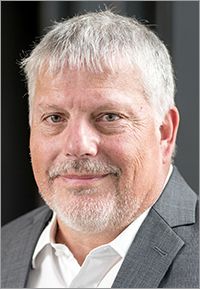Gather with your colleagues
The plenary session is one of the highlighted events of the meeting, allowing participants from each symposia to come together and recognize some of the greatest minds in the field.
Monday, July 22 | 0800h
Lomond Auditorium
“From Bioelectrochemistry to Electrocatalysis. Using Nanoelectrochemical Tools for Elucidating Similarities and Differences” by Wolfgang Schuhmann
 Wolfgang Schuhmann studied chemistry at the University of Karlsruhe, and completed his PhD with F. Korte in 1986 at the Technical University of Munich. After finishing his habilitation at the Technical University of Munich in 1993, he was appointed professor of analytical chemistry at the Ruhr-University Bochum in 1996. His research interests cover a broad spectrum of different fields of electrochemistry, including micro- and nanoelectrochemistry, scanning electrochemical microscopy, biosensors, biofuel cells, development of electrocatalysts for energy conversion, batteries, photoelectrochemistry, electrochemical deposition of catalyst nanoparticles, and noble-metal free electrocatalysts, among others.
Wolfgang Schuhmann studied chemistry at the University of Karlsruhe, and completed his PhD with F. Korte in 1986 at the Technical University of Munich. After finishing his habilitation at the Technical University of Munich in 1993, he was appointed professor of analytical chemistry at the Ruhr-University Bochum in 1996. His research interests cover a broad spectrum of different fields of electrochemistry, including micro- and nanoelectrochemistry, scanning electrochemical microscopy, biosensors, biofuel cells, development of electrocatalysts for energy conversion, batteries, photoelectrochemistry, electrochemical deposition of catalyst nanoparticles, and noble-metal free electrocatalysts, among others.
Abstract
In enzyme-based bioelectrochemistry, a substrate is converted in the active site of a redox enzyme, and the electrons have to be transported to the electrode either by tunneling or using redox mediators. Nature designed the enzyme integrated active sites to, on the one hand, achieve extraordinary selectivity in the catalysed reactions, and, on the other hand, to prevent unwanted electron exchange reactions. In contrast, in electrocatalysis the active sites for the catalytic conversion are generally located at the surface of e.g. nanoparticles, and hence selectivity is limited due to the less defined molecular structure of the active site. Evidently, also in electrocatalysis, electrons have to be transferred between the active site and an underlying current collector.
Nano- and microelectrochemistry allows investigating electrocatalytic systems largely circumventing mass transport limitations. Hence, approaching smaller and smaller dimensions in electrochemistry is supposed to be beneficial for obtaining in-depth insight into electrocatalytic processes. This presentation includes (i) the reproducible fabrication of carbon-based nanoelectrodes, (ii) the development of enzyme-based nanoelectrodes for intra-cellular measurements, (iii) immobilization or growth of single nanoparticles on nanoelectrode surfaces, (iv) identical location TEM analysis of individual catalyst nanoparticles immobilized at nanoelectrodes, (iii) nanozymes as highly active electrocatalysts, to (iv) the characterization of novel catalyst materials for energy conversion.
The presentation aims to bridge fields from bioelectrochemistry to electrocatalysis and the characterization of active sites in battery materials using nanoelectrochemical tools.
Acknowledgements: The author is grateful for the contributions of his PhD students and senior scientists, specifically among others Patrick Wilde, Thomas Quast, Tobias Löffler, Denis Öhl, Dr. Yen-Ting Chen, Dr. Harshitha Barike, Dr. Corina Andronescu, Tsvetan Tarnev, Dr. Justus Masa, Dr. Stefan Barwe, Dr. Alexander Botz, Julian Szczesny, Dr. Adrian Ruff, Dr. Felipe Conzuelo, Dr. Fangyuan Zhao and to the cooperation partners in the “Nanozyme project” from UNSW Sydney Dr. Tania Benedetti, Prof. Richard Tilley, Prof. J. Justing Gooding, Peter O’Mara, and Johanna Wordsworth. The BMBF project “NEMEZU” (03SF0497B), the Humboldt foundation, as well as the projects funded by the Deutsche Forschungsgemeinschaft (FOR 2397-1; CRC247) are acknowledged for financial support.




